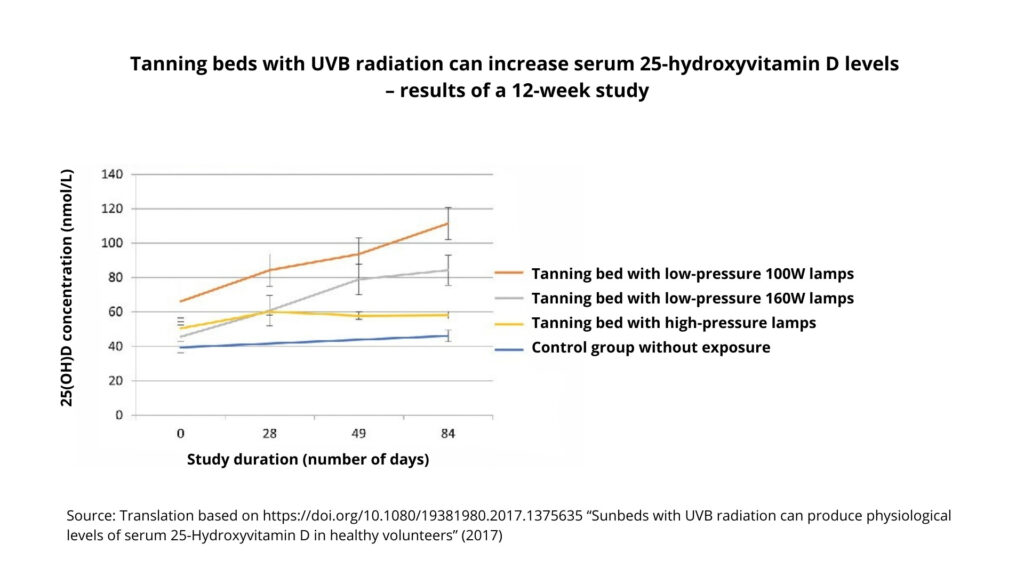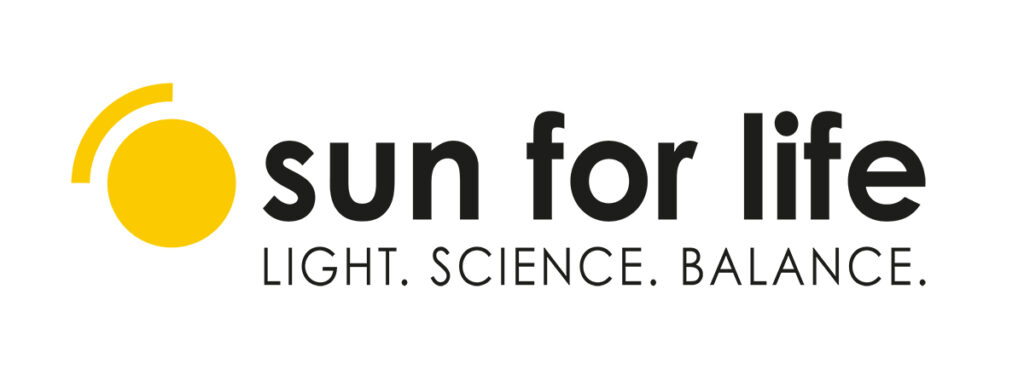Can a tanning bed boost your Vitamin D? A scientific look at UVB light
When we think of sunbeds, the first association is often aesthetics – a golden tan before a vacation or a mood boost during the winter. But rarely do we associate them with… vitamin D.
As shown in a study published by S. Kimball and colleagues in the journal Dermato-Endocrinology, properly selected tanning sessions can indeed serve as an alternative source of valuable vitamin D, especially during the winter months.
Vitamin D and UVB light – how does it work?
Vitamin D3 (cholecalciferol) is synthesised in our skin under the influence of UVB radiation – the same kind that reaches us from the sun in summer. The problem is, during the winter months (especially above the 44th parallel), UVB radiation hardly reaches the Earth’s surface. This means that even if we spend time outdoors, our bodies are unable to produce vitamin D naturally.
This raises the question: Can artificial sources of UVB, such as specialised sunbeds, replace natural sunlight? Kimball’s 2017 study says yes, provided the device’s parameters are properly selected and safety guidelines are followed.
The Samantha Kimball study – what did it look like?
The study included healthy adults who used various types of tanning beds regularly for 12 weeks during the winter. The aim was to measure whether UVB exposure would increase 25(OH)D levels – the main biomarker of vitamin D in the body.
Participants were divided into four groups:
- Group 1: low-pressure sunbed with 100W lamps (4.2% UVB)
- Group 2: low-pressure sunbed with 160W lamps (2.2% UVB)
- Group 3: high-pressure sunbed 700W (only 0.8% UVB)
- Group 4: control group – no sunbed use
The results?
The groups using lamps with a significant percentage of UVB (groups 1 and 2) saw a substantial increase in vitamin D levels, on average by 42 nmol/L.
For many participants, levels exceeded 100 nmol/L, which is considered a physiological level, similar to what is seen in people living near the equator who spend a lot of time outdoors.

Importantly – safe exposure!
All sessions were conducted following guidelines from Health Canada and device manufacturers, which helped avoid skin burns or other adverse effects. No cases of sunburn were reported. Gradual dose increases and adjusting exposure to skin type (using the Fitzpatrick scale) proved effective.
Interestingly, the appearance of a tan did not interfere with vitamin D production – on the contrary, levels continued to rise even after visible pigmentation developed.
Why is this study so important?
In winter, our bodies have limited ability to produce vitamin D. Supplements are effective, but not everyone takes them regularly. What’s more, a large portion of the population – even those mindful of health – still have deficiencies.
In Kimball’s study, over 80% of participants had insufficient 25(OH)D levels at the beginning. Thanks to controlled use of sunbeds, many reached levels considered optimal for bone health, immunity, and possibly even prevention of certain cancers.
Conclusion – Is it worth considering sunbeds as a source of vitamin D?
Yes – but wisely. Kimball’s study provides reliable data on the effectiveness of sunbeds in producing vitamin D. It shows that with proper safety practices, sunbeds can be an alternative to supplementation, especially in winter and in countries with low sunlight exposure.
However, this is not an encouragement for excessive tanning or ignoring UV risks. The key is moderation, dose control, and following manufacturer and public health recommendations.
It’s also worth noting that not all sunbeds (or their lamps) emit UVB in the proper range – only devices with specific lamp mixes (2–4% UVB) have proven effectiveness for vitamin D production. That’s why it’s always a good idea to ask about the type and specifications of the lamps before using a sunbed.
Source: Kimball SM, Lee J, Vieth R. Sunbeds with UVB radiation can produce physiological levels of serum 25-Hydroxyvitamin D in healthy volunteers. Dermato-Endocrinology, 2017: http://dx.doi.org/10.1080/19381980.2017.1375635
